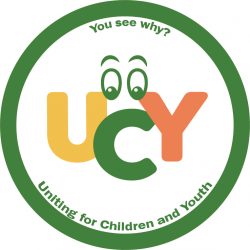An Example of a Paradigm Shift that Informs Our Task at Hand
– provided by Don Berg
Imagine a doctor in a hospital in 1840. The hospital is one of the best in the world, but patients in his hospital get infected at a rate of 50% and of those who become infected at least 50% die. The survival rate of patients in his hospital is only 75%. These dismal facts have alarmed him so much that he is committed to doing better. Now imagine what he and his staff will come up if they do a root cause analysis.
This is actually something you, dear reader, probably cannot imagine accurately because you have spent your entire life in a society that is organized according to compliance with germ theory. Even if you are not a doctor nor even remember whatever level of biology you were taught you have habits and expectations of our society in which its institutions have been shaped by decades of compliance with the dictates of germ theory. The reason that I chose 1840 in particular is that germ theory did not exist yet. The few people who considered the possibility that a disease like cholera might be caused by something in the water, rather than bad air (known as miasma) had no proof that their hunch was true.
Our doctor and his staff will not be able to think effectively about the root causes of their survival rate. In the absences of effective thinking the changes that will be proposed are unlikely to be effective means of reliably changing the reality of their medical practice. What is missing in 1840 is germ theory, which was not articulated in the form we now know it until the 1860s. And even having an articulated theory didn’t make any meaningful, systematic difference in hospital practices until the 1940s, according to the book Bad Medicine by David Wootton.
Doctors and the health system have been pretty good at fixing broken bones and a few other relatively straightforward healing facilitation tasks for time immemorial. Curing communicable diseases and generally preventing death, however, were notoriously difficult to pull off until after 1) the science of biology came into existence, 2) germ theory was developed, and 3) institutional structures were altered to enable the health professions to act as if they were subservient to germ theory and other relevant aspects of the biological sciences.
How does this example apply to education?
I argue that the conceptual landscape of mainstream education does not yet have a causal model for creating educated people, the school equivalent of germ theory. The school folks will not be able to conceive of the causal factors that are preventing the children in their school from becoming educated. Because they are embedded in a society and school system that both assume that agency is irrelevant to children being and becoming educated, they will not be capable of accurately diagnosing their problems and their proposed solutions will be unlikely to improve the educative value of the experiences they provide for children. Even if they happen upon solutions that improve the educative value of some experiences they will be unlikely to maintain that educative value over time because they lack a causal model that would enable them to ensure that the educative features of their practices are preserved.
What basic science can educators count on for a casual model that will reliably enable them to educate children in the same way that doctors can count on biological sciences to enable them to cure disease and prevent death? That basic science is psychology, but the educational equivalent of germ theory has not yet been recognized in the field. I contend that Self-Determination Theory is that causal model, but this idea has not yet been recognized in the field. Even after it becomes recognized by the field there will still be societal and institutional barriers that can only be overcome through political action to change policies at high levels of governance.

